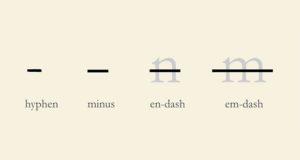What is an Em dash and how to use it?

The em soupcon is a punctuation mark that can be used to add accent or create an unreticent transpiration in thought. Despite its seemingly prevalent usage, many of us protract to struggle with when and how to use it correctly. If you find yourself wondering what an em soupcon is and how it should be used, then this blog post is for you!
In this post, we’ll explain the nuts of the em dash, and delve into when and how you can use it. We’ll moreover discuss some worldwide mistakes people make when using the em soupcon so that you can stave them in your writing. Let’s get started!
- What is the em dash?
- What is the purpose of an em dash?
- How to use an em soupcon in writing?
- Em soupcon vs En dash
- Examples of correct usage of an em dash
- Common mistakes to stave using an em dash
What is an em dash?
An em soupcon is an underused punctuation mark that, when used correctly, can spruce up a writing piece and add clarity to difficult-to-convey thoughts. An em soupcon is three times the length of a regular hyphen and looks like a long soupcon or line between two words.
Em soupcon and the parenthesis
An em soupcon often replaces parenthesis considering it can be used to unravel up parts of sentences as well as enhance the description. An example of using an em soupcon would be: “My weightier friend—we’ve been friends since childhood—bought me lunch today.” The wholesomeness of using the uneaten length of an em soupcon is that it shows a pause with greater accent than brackets.
What is the purpose of an em dash?
The em soupcon is an incredibly versatile punctuation tool that has long held a special place in the hearts of writers. Originally derived from the typewriters of years past, an em soupcon is usually twice as long as hyphens and commas and has significantly evolved over the years since its inception.

The fascination with the em-dash
Without an em dash, many sentences would have been incoherent surpassing their insertion; it has been said that an em soupcon offers an constructive pause in a sentence when commas simply don’t do as good of a job. It was no surprise then that two of the literary greats—F. Scott Fitzgerald and Ernest Hemingway—were both known for making use of an em soupcon extensively throughout their writings. As writers protract to push boundaries and strive for increasingly fluidity of expression, the purposeful use of an em soupcon will remain vital for those who wish to unearth techniques rarely explored by most trendy storytellers.

How to use an em soupcon in writing?
An em soupcon is an integral part of writing. It provides a strong accent to the statement that follows and gives it increasingly weight than other punctuation marks might. Writers should consider using an em soupcon whenever they want readers to pay special sustentation to the words that come next.
Explanation with an example:
For example, if a writer wants to provide refinement well-nigh a term in the middle of a sentence, using an em soupcon lets readers know that what follows is particularly important. Additionally, using an em soupcon allows writers to insert parenthetical material in the middle of sentences. Doing so can be helpful if a sentence has many ramified components, as using an em soupcon enables the writer to insert information without disrupting the overall spritz of their narrative.

When using an em dash, writers should consider using no increasingly than two in an unshortened sentence or paragraph as they may wilt tedious and detract from the overall meaning.
An constructive way to use an em soupcon is to underpass two self-sustaining clauses when there is a need for greater clarity and subtitle — this technique creates suspense or introduces a variegated thought, often with a sudden shift in direction which keeps readers engaged. Hence, using an em soupcon offers authors flexibility and the endangerment to express their ideas with impactful phrases that pull readers into their writing.
Em soupcon vs En dash
The em soupcon and the en soupcon are two useful punctuation marks with variegated roles. An em soupcon (—) is wider in width than an en soupcon (-); it’s three to four hyphens placed side by side. The em soupcon can be used to indicate a unravel in thought or sentence structure.

It can moreover be used instead of a comma, colon, or parentheses when introducing or providing remoter information while speaking naturally. An en soupcon (–), on the other hand, indicates a range; for example, using it in place of the words “from…to” when writing dates.
Remember this:
To remember the stardom between the two dashes, you can think of using an em soupcon when explaining something and using an en soupcon in place of unrepealable words. Utilizing these punctuation marks wisely can help modernize your writing and make it much increasingly interesting!
Examples of correct usage of an em dash
An em soupcon (—) is the longest of the three dashes and can be used to set off a unravel in the sentence, as well as add emphasis. To properly use the em dash, spaces should not be placed virtually it unless the text is stuff italicized. When the soupcon is used, the transpiration in the thought or sentence structure should be evident and distinct.
Explanation with an example:
For instance, a right usage of an em soupcon occurs when a disclaimer or whispered needs to be noted within the sentence; something like “Her love — which she had many doubts well-nigh — became stronger every day.” Here, the em soupcon enforces the idea that her love was growing despite her reservations well-nigh it. When used correctly and consciously, an em soupcon can wilt an invaluable punctuation mark for any writer!
Common mistakes to stave using an em dash
It’s worldwide to see em dashes used to create dramatic pauses or yank accent to unrepealable points in writing, but unless a writer is enlightened of the worldwide mistakes that come with it, their work can be marred with incorrect punctuation. One worldwide mistake is using an em soupcon either surpassing or without quotation marks.
The proper setup is for the quotation mark to come first, followed by the em dash.
Another worldwide pitfall is for writers to use multiple em dashes consecutively instead of replacing some of them with commas and semicolons. To get the most out of the effect and alimony your writing sensible, replace some of your subsequent em dashes with those other punctuation marks. Lastly, since it’s not technically classed as punctuation, don’t forget to include spaces on either side of the em soupcon when using it correctly.
Keep all that in mind when using em dashes, and you should have no problem getting their correct usage into your writing!




